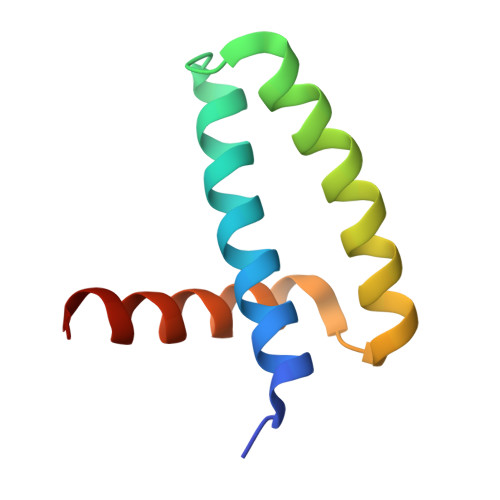The NS1 gene from bat-derived influenza-like virus H17N10 can be rescued in influenza A PR8 backbone
Zhao, X., Tefsen, B., Li, Y., Qi, J., Lu, G., Shi, Y., Yan, J., Xiao, H., Gao, G.F.(2016) J Gen Virol 97: 1797-1806
- PubMed: 27217257
- DOI: https://doi.org/10.1099/jgv.0.000509
- Primary Citation of Related Structures:
5H5N - PubMed Abstract:
Influenza A viruses have the potential to cause pandemics due to the introduction of novel subtypes against which human hosts have little or no preexisting immunity. Such viruses may result from reassortment between human and animal influenza viruses. Recently, new influenza-like viruses were identified in bats, raising the concern for a new reservoir of potentially harmful influenza viruses that could form reassortants with categorized human influenza A viruses. However, until now, it has not been possible to generate a recombinant reassortant virus containing a single functional gene or domain from H17N10 that could propagate. Here, we demonstrate that a recombinant A/Puerto Rico/8/1934 (H1N1) virus with NS1 gene from H17N10 influenza-like virus can be successfully rescued. We used luciferase reporter assays and quantitative reverse transcriptase PCR to show that the NS1 protein from H17N10 inhibited Sendai-virus (SeV)-induced activation of IFN-β expression with an efficiency similar to NS1 from an H5N1 strain. Moreover, the crystal structure of the NS1 (H17N10) RNA-binding domain is also similar to that of other NS1s. These results demonstrate that H17N10 influenza-like virus indeed contains functional genes that are compatible with categorized influenza A viruses. Although the chance of this particular event occurring in nature seems negligible, further research is needed to address the possibility of the natural formation of reassortants.
Organizational Affiliation:
CAS Key Laboratory of Pathogenic Microbiology and Immunology, Institute of Microbiology, Chinese Academy of Sciences, Beijing 100101, P. R. China.














